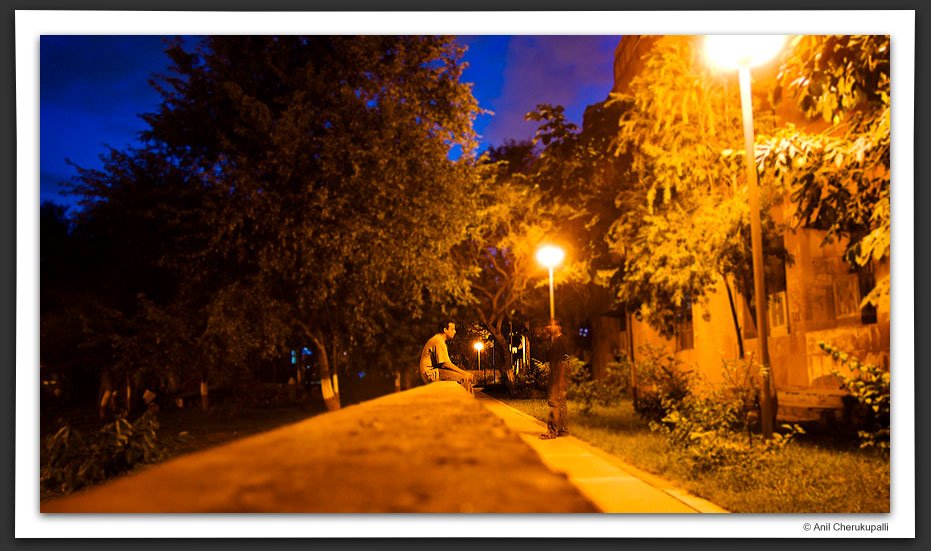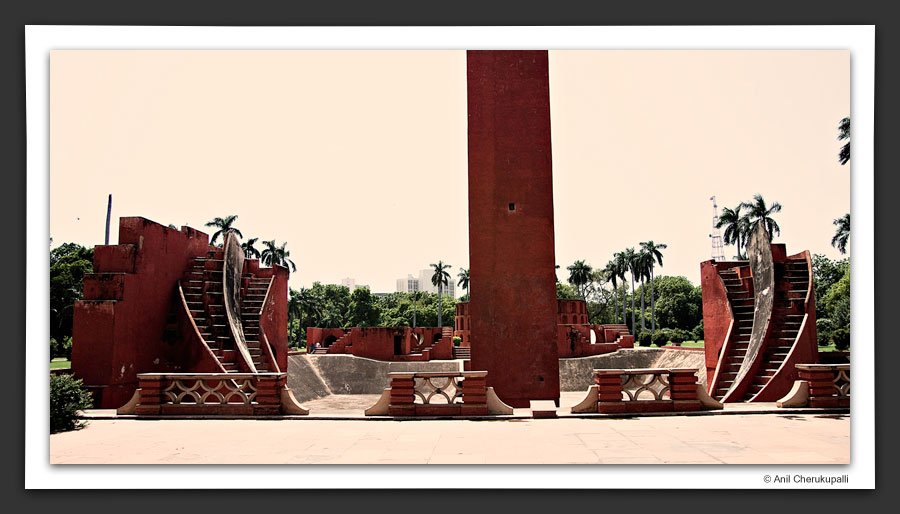Spotted Deer

October 2008, Hyderabad.
Also known as Cheetal (Axis axis).

October 2008, Hyderabad.
Also known as Cheetal (Axis axis).

October 2008, Hyderabad.
The Blackbuck (Antilope cervicapra) also known as Krishna Jinka in Telugu is the state animal of Andhra Pradesh.

October 2008, Hyderabad.
Yesterday, I attended a play or rather a solo performance on the life of the great Hindi and Urdu writer, the Late Dr. Rahi Masoom Reza. To know more about him go here. The performance was very well written, acted and moving. It was especially relevant for contemporary Indian society where Hindus and Muslims increasingly view each other with suspicion and distrust.
I wish I could have avoided the lamp that seems to be coming out of the actor’s head but since I was limited to shooting from my seat I had to make do with this angle.

September 2008, Hyderabad.
About a month back, along with a few other amateur photographers, I had visited two camps for girls in and around Hyderabad managed by the MV Foundation (read more about them here) as part of the first step in a project we intended to do with them. The foundation works with children who come from a child labor as well as other troubled backgrounds. They take care of them in these residential camps where they are made part of a bridge course and after about a year in that are then put in the normal school stream. Many such children have done incredibly well, with some now studying medicine and some others finding good jobs in the IT sector.
It was great fun to interact with and photograph the children. They were very enthusiastic about getting photographed. Even though at times their insistence to be photographed multiple times could be a little overwhelming their infectious happiness upon seeing their photos on the LCD screen of the camera made you forget all that. The children were a mix of age groups and came from diverse backgrounds. While most of them came from a child labor background some of them had gone through child marriages, suffered domestic abuse, lived all their lives until brought to the camps literally in jungles and even escaped murderous fathers. But the common thread that ran through all of them was their unwavering commitment to educating themselves. They did not want to go back to their old life and in fact some of them wanted to bring into the camps as many children as they could who were still caught in child labor. And that sincere belief they had in education I found very inspiring.

September 2008, Hyderabad.
For the first time since I got into photography I was part of a two day Nature Photography exhibition that was on for the past couple of days. The location was the Hyderabad office of global consulting firm Accenture. About 12 of my prints were on display along with another 50 of five other photographers. All six of us are informally or formally part of the Butterfly Conservation Society of Andhra Pradesh but the exhibition was not limited to butterflies. The photos on display ranged from landscapes, macros to photos of rarely seen birds. It was not a professional exhibition as we did not have the financial resources to mount one but more an attempt to show some of the variety and delights nature has on offer to people who mostly do not venture out of the concrete jungle of a city. The response was quite gratifying especially to me as I’ve only recently started seriously venturing into nature photography.
The above photo was one of the prints on display at the exhibition and is from my first outing with members of the Butterfly Conservation Society about a month back. I’ve to say that these outings (have been to two other such outings with them) have opened up a completely new world to me. The sheer variety of butterflies, some of which are so colorful to look at, one can find over a limited area never fails to surprise me. It takes a lot of patience and practice to get decent photos of these lovely little creatures but the results are often quite rewarding. So from now on you will see them more often on this blog.

August 2008, Delhi.
Towards the end of our stay in Delhi we went to stay with a friend on the campus of Jawaharlal Nehru University. The above photo was taken while exploring the campus one night. With this photo my mini-travelogue comes to an end. I hope you enjoyed reading it.
(To read this mini-travelogue in sequence from the beginning please go here.)

August 2008, Delhi.
After visiting the Jantar Mantar I made my way to Raj Ghat. Raj Ghat is a memorial to Mahatma Gandhi and also the place where he was cremated. Nowadays, it has a mostly ceremonial function, used by politicians from India and around the world for photo opportunities. It is a pity that Gandhi and his philosophy of non-violence have largely become irrelevant in contemporary India. Even more shocking is the contempt with which most Indians of my generation view him. He is blamed for everything from the partition of India, appeasement of Muslims to not doing anything concrete for the Untouchables. In a world being torn apart by religious extremism and unnecessary wars I feel that his teachings still hold great relevance.
In an interesting side note, I met a lady from Aachen (which is about 30 minutes away from Cologne) at Raj Ghat. She had come there with her husband to pay her respects and we got to talking a little bit about India and Germany.
(To read this mini-travelogue in sequence from the beginning please go here.)

August 2008, Delhi.
I made my way to the Jantar Mantar on a hot Monday morning. The Jantar Mantar is an observatory consisting of a series of scientific instruments built in the form of buildings and used to make astronomical measurements (the huge block you see in the middle of the above photo is actually part of a giant sun dial). It was built by Maharaja Jai Singh II of Jaipur from 1724 onwards. A total of five such observatories were built in various cities in North India of which the ones in Jaipur and Delhi are most popular. Incidentally, the area to the right of Jantar Mantar is the officially designated area in which protests/demonstrations can be organized in Delhi by anyone with a grievance. The day I was visiting the observatory there were a group of Hindu holy men protesting and criticizing what they called ‘the appeasement of Christians and missionaries (while being hard on Hindus)’ by the current Indian government.
(To read this mini-travelogue in sequence from the beginning please go here.)

August 2008, Delhi.
The Hazrat Nizammudin Dargah is the mausoleum of one of the most popular Sufi saints in India, Nizamuddin Auliaya, who is revered by not just Muslims but also by many Hindus and even Christians. The same dargah complex also houses the tomb of Amir Khusro, the famous poet and musician as well as father of qawwali, who was a disciple of Nizamuddin. Fittingly, every Thursday there are Qawwali sessions organized in the verandah before the mausoleum of Nizamuddin Auliya. The above photo is of one of the qawaali singers, from one such session we attended, as he took a break from singing.
(To read this mini-travelogue in sequence from the beginning please go here.)

August 2008, Mussoorie.
Mussoorie is locally referred to as the ‘Queen of the Hills’. As such it has been a popular hill station from the time of the British Raj. There are great views from the top over the surrounding valley and on a clear day you can apparently see snow-capped peaks of the Himalayas but the day we went there a thick cloud cover descended over the region covering the whole valley below with a thick white blanket. While this eliminated any chance of great views it did offer interesting photographic opportunities of a different kind as can been above.
(To read this mini-travelogue in sequence from the beginning please go here.)